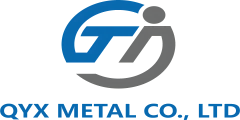Application of
titanium alloy in bicycle and auto racing field
titanium bicycles have the advantages of light weight, high strength, good corrosion resistance and fatigue resistance. Since the mid-1980s, titanium bicycles have developed rapidly, which has greatly promoted the application of
Titanium Materials. For example, ANCOTECH, HAYNES INTERNATIONAL. and SANDVIK SPECIAl. METALS, three companies producing Ti3Al-2.5V pipes in the United States, have all turned to the bicycle industry.
In terms of material selection, Ti-3Al-2.5V and Ti-6Al-4V are the most commonly used titanium alloys for bicycle frames. Compared with other titanium alloys, the biggest advantage of Ti-3Al-2.5V is high yield strength and good process plasticity , and has good welding performance, the disadvantage is the high price. Although it was developed for aircraft hydraulic systems, it meets the material performance requirements of the bicycle market due to its good formability, corrosion resistance and elongation, combined with high fatigue strength and low density.
In the past few years, frames made of industrial pure titanium arms and non-aerospace Ti-3Al-2.5V (sports grade) titanium alloys have been popular, and Ti-6AL-4V is the most mature application with relatively good comprehensive mechanical properties. It is the titanium alloy material with the most complete performance data. It has good process plasticity and superplasticity, and is suitable for various pressure processing and forming. It can also be welded and machined in a variety of ways, but the formability, weldability and machining The performance is not as good as the former. In terms of making frame, Ti-6Al-4V is also attractive. It has slightly higher modulus and strength than li-3AL-2.5V, but it is more difficult to process it into small diameter bicycle frame tubing. The crankshaft positioner, pedals, handlebars and other bicycle parts connected to the frame are mostly made of Ti-6Al-4V.
Due to the high cost of smelting titanium alloys and the high content of expensive elements such as
Molybdenum, vanadium, chromium, and
Niobium, the price of the products is relatively high; in addition, due to the active chemical properties of titanium alloys, it is easy to absorb in extrusion, bending and other plastic forming and welding processes. Hydrogen and oxygen absorption degrade product performance, formability, weldability and machining performance are also poor, which greatly increases the process cost, which restricts the popularization of titanium alloy frame. Now some foreign material manufacturers are working on developing low-cost, easy-to-process new titanium alloy materials.
Application of titanium alloy in racing car (car/motorcycle)
Titanium is an ideal material for automotive structural parts. Connecting rods, valves, mufflers, exhaust pipes, hubs and other components are suitable for titanium alloy manufacturing. For example, the exhaust system of the Coryete Z06 model launched by General Motors of the United States uses titanium. For the muffler, the Lupo FSI car of German Volkswagen uses titanium springs, and the amount of titanium used in Japanese cars has reached the level of 200~300t/a. In the past, the annual output of cars in the world was 60 million. If 50% of the cars used 1kg of titanium, the demand for titanium in the world would increase by more than 60%. Rod connecting rod weight reduction is of great significance to the engine.
Since the racing engine connecting rod is a load part that bears strong impact and high dynamic stress, its light weight can reduce torque and power output, improve the impact of dynamic balance, and reduce running noise, vibration and fuel consumption. In addition to the commonly used hot forging process, the titanium alloy connecting rod currently manufactured by powder metallurgy (forging) method has great development due to its high material utilization rate, excellent performance, net shape processing and quality fluctuation of the connecting rod. Prospect. is advanced manufacturing technology. At present, the powder forging technology of foreign connecting rods has matured. In 1995, the powder forging connecting rod of the Jaguar engine AJ-8V produced by the Bridgeford Engine Factory in the United Kingdom had a mass of only 605g. Compared with ordinary die forgings, the material utilization The rate increased from 48.3% to 95.9%.
